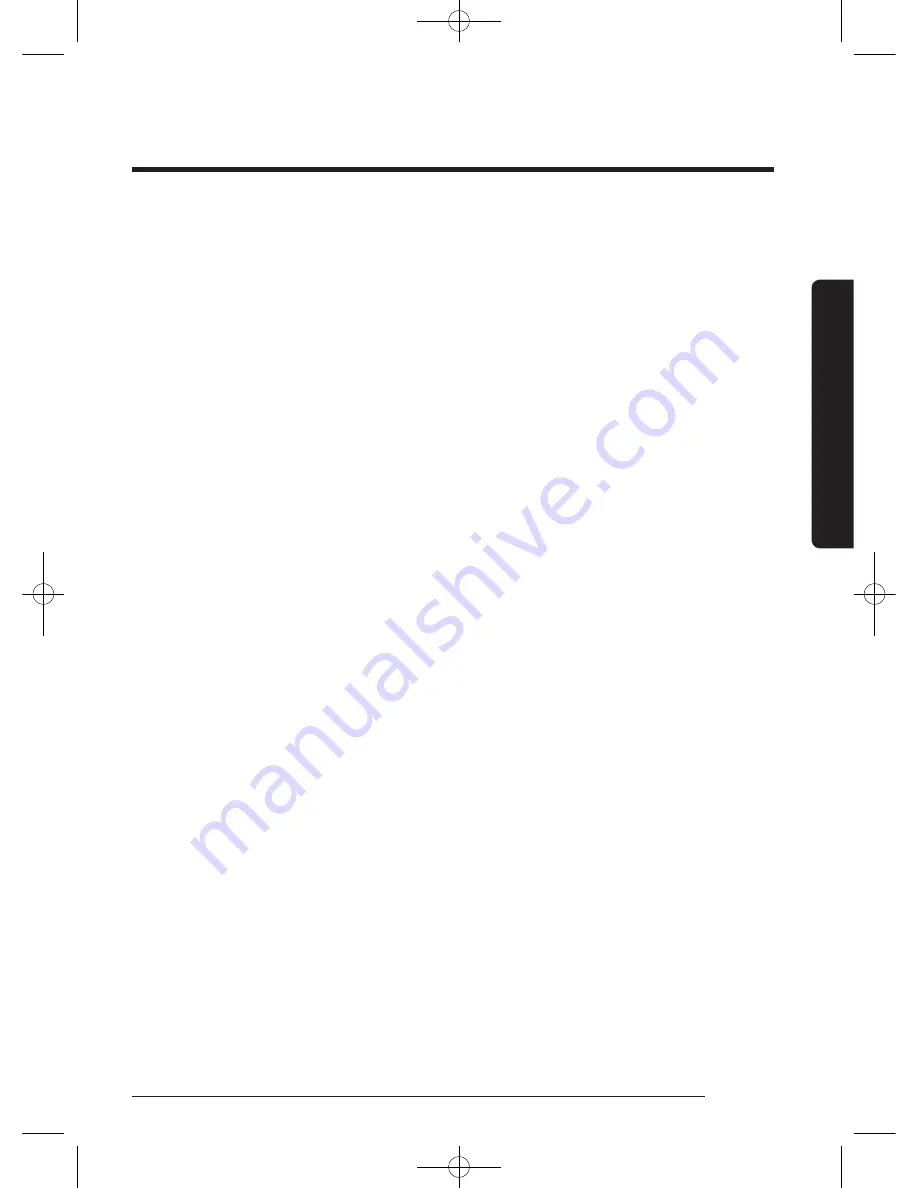
English 15
Ins
tallation
•
The hood should have at least 12 inches (30.5 cm) of clearance between the bottom of
the hood and the ground or other obstruction. The hood opening should point down.
•
Never install a screen over the exhaust outlet.
•
To avoid lint buildup, do not exhaust the dryer directly into a window well. Do not
exhaust under a house or porch.
•
If exhaust ductwork must run through an unheated area, the duct should be insulated and
slope slightly down towards the exhaust hood to reduce condensation and lint buildup.
•
Inspect and clean the interior of the exhaust system at least once a year. Unplug the
power cord before cleaning.
•
Check frequently to be sure the exhaust hood damper opens and closes freely.
•
Check once per month, and clean at least one time per year. Note: If clothes are not
getting dry, then check ducting for obstructions.
•
Do not exhaust dryer into any wall, ceiling, crawl space, or concealed space of a building,
gas vent, or any other common duct or chimney. This could create a fire hazard from lint
expelled by the dryer.
If the new dryer is being installed into an existing exhaust system, you must make sure:
•
The exhaust system meets all local, state, and national codes.
•
That a flexible plastic duct is not used.
•
To Inspect and clean all lint buildup from inside the existing duct.
•
The duct is not kinked or crushed.
•
The exhaust hood damper opens and closes freely.
The static pressure in any exhaust system must not exceed 0.83 inches of water column, or
be less than 0.
This can be measured with the dryer running with a manometer at the point where the
exhaust duct connects to the dryer. A no-heat setting should be used. The dryer tumbler
should be empty and the lint filter clean.
DV7700J-03170Q-01_EN-US.indd 15
2015/4/9 16:22:33






























